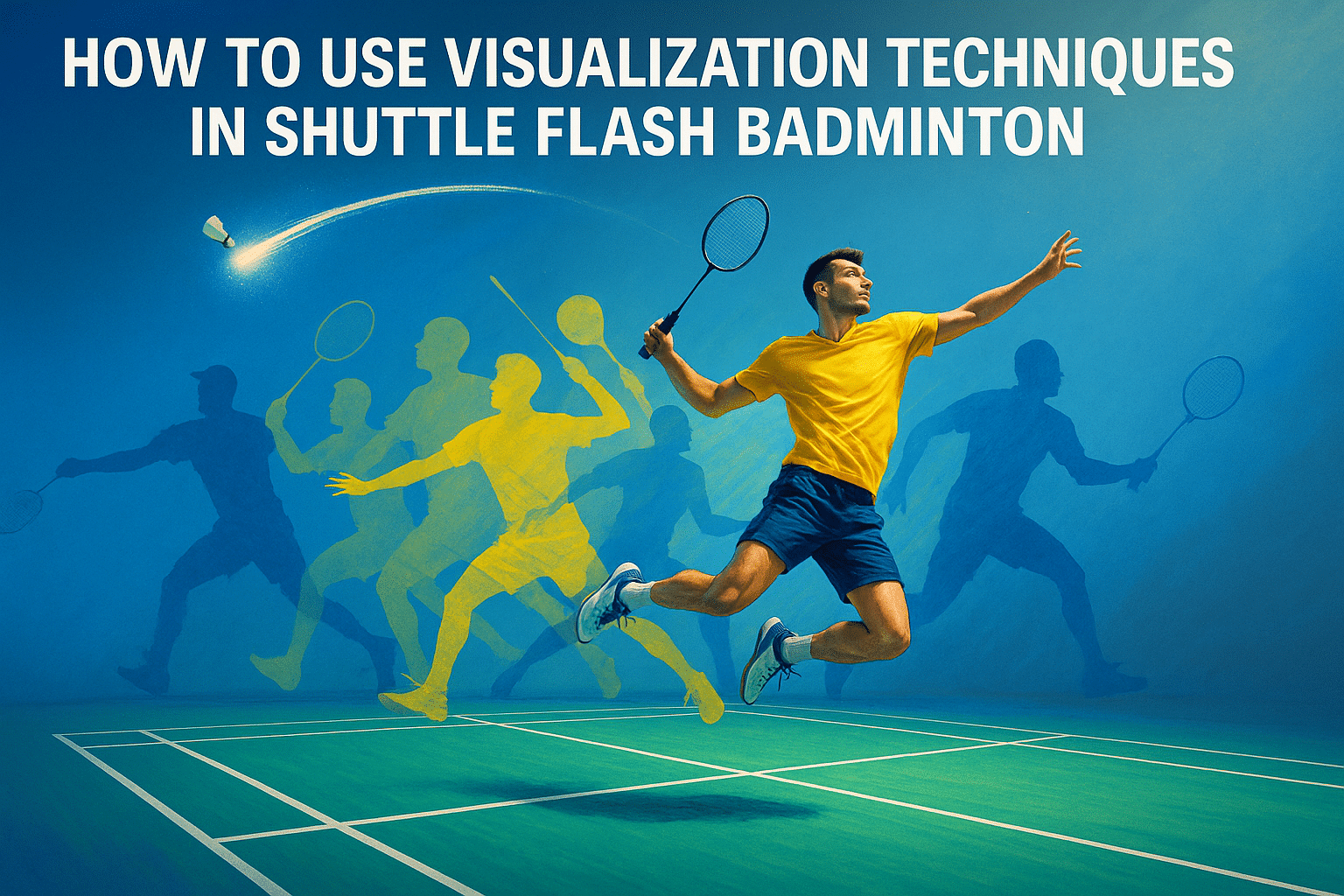How to Use Visualization Techniques in Shuttle Flash Badminton
In the world of sports, mental preparation is as crucial as physical training. Shuttle Flash Badminton, a high-paced and reflex-driven game, demands not just agility and speed but also sharp mental acuity. Visualization techniques can be a game-changer for athletes looking to enhance their performance. In this guide, we’ll explore how you can integrate visualization into your training regimen to elevate your Shuttle Flash Badminton game.
Table of Contents
1. Introduction to Visualization in Sports
2. Benefits of Visualization in Shuttle Flash Badminton
3. How to Practice Visualization Techniques
4. Visualization Exercises for Badminton Players
5. Common Challenges and How to Overcome Them
6. Conclusion
7. FAQs

Introduction to Visualization in Sports
Visualization, also known as mental imagery, involves creating a mental picture of an action before executing it physically. Top athletes across various sports use this technique to improve focus, build confidence, and enhance performance. In Shuttle Flash Badminton, where split-second decisions can determine the outcome of a match, visualization can help players anticipate and react more effectively.
Benefits of Visualization in Shuttle Flash Badminton
Visualization offers several advantages that can enhance your badminton skills:
1. Improved Focus: Visualization helps in honing your concentration, allowing you to stay present during matches and maintain a steady focus on your objectives.
2. Enhanced Confidence: By mentally rehearsing successful plays and scenarios, you boost your self-belief and reduce performance anxiety.
3. Better Decision Making: Visualization prepares your mind to make quick decisions, which is crucial in a fast-paced sport like Shuttle Flash Badminton.
4. Muscle Memory: Repeated visualization reinforces muscle memory, helping you respond instinctively during play.
How to Practice Visualization Techniques
Integrating visualization into your training routine doesn’t require special equipment—just a quiet space and some time. Here’s how you can start:
1. Find a Quiet Space: Choose a peaceful environment free from distractions to start your visualization practice.
2. Set Clear Goals: Decide what specific skills or scenarios you want to visualize—perhaps a powerful smash or a quick defensive move.
3. Engage All Senses: Visualization becomes more effective when you engage all your senses. Imagine the sound of the shuttlecock, the feel of the racket, and even the smell of the court.
4. Be Detailed: Focus on every detail of the movement or scenario, picturing it as vividly as you can.
Visualization Exercises for Badminton Players
Here are some exercises to help you get started:
1. Match Simulation: Visualize a full match, including each serve, rally, and point. Picture yourself winning and experiencing the emotions of success.
2. Skill Focus: Concentrate on a specific skill you want to improve. Visualize performing it perfectly, then practice it physically.
3. Overcoming Challenges: Picture yourself facing and overcoming common challenges, such as a tricky opponent or a difficult shot.
Common Challenges and How to Overcome Them
While visualization is powerful, some may face challenges initially:
1. Difficulty Visualizing: If you struggle to create clear images, start with short sessions and gradually increase the complexity and duration.
2. Negative Imagery: It’s crucial to focus on positive outcomes. If negative scenarios creep in, consciously redirect your thoughts to positive ones.
3. Lack of Consistency: Like any skill, consistency is key. Set a regular schedule for your visualization sessions to see tangible improvements.
Conclusion
Visualization is a powerful tool that can significantly impact your Shuttle Flash Badminton performance. By integrating mental imagery into your training routine, you can enhance focus, boost confidence, and refine your skills. Remember, like any other technique, it requires patience and practice. So, find a quiet corner, close your eyes, and start visualizing your way to victory! 🏸
FAQs
1. How often should I practice visualization?
Aim for at least 10-15 minutes daily. Consistency is more important than duration, so try to incorporate it into your regular training routine.
2. Can visualization replace physical practice?
While visualization is a valuable tool, it should complement rather than replace physical practice. Both mental and physical training are essential for overall performance improvement.
3. How soon can I expect to see results?
Results vary among individuals, but with consistent practice, some players notice improvements in focus and confidence within a few weeks.
4. Is it necessary to visualize every aspect of the game?
Focus on areas where you feel improvement is needed or where you face frequent challenges. Over time, you can expand to other aspects of the game.
By embracing visualization techniques, you’re not just preparing for a game—you’re setting the stage for success. Happy playing! 🎉
